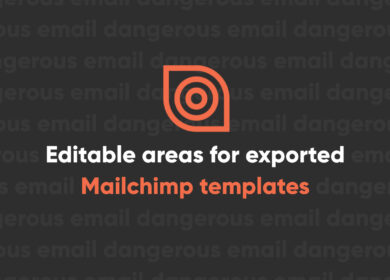
5 ways to come up with new and compelling blog topics

Blogging is one of the best ways to build and engage with your audience. It improves your website’s search rankings, answers your customers’ key questions, and can help establish your brand as a thought-leader in your industry.
But no matter how easy and advantageous blogging might seem in the early stages, there’s inevitably going to come a time where you start to run out of topics. Eventually, you’re going to feel like you’ve said everything anyone could ever want to hear about your brand or industry.
While this may seem like the case, it isn’t. Thankfully, there’s almost always more to say. But how you arrive at those end-of-the-line, in-depth topics can be a bit of a challenge.
Here are 5 tips to help you go about finding and coming up with new and exciting blog topics in 2020 and beyond.
1. Use Google (for free)
When I say “use Google,” I don’t mean to literally ask Google how to come up with blog topics (although that is valid and is probably how you ended up here in the first place). No, I’m talking about leveraging some of Google’s core search features to find ideas related to your key service or industry.
For example, say you owned a bike shop. If you were to simply type “biking” into Google, some topic nuggets would likely present themselves.
What are the best biking trails in Minnesota? What are the main health benefits of biking? What are the best biking apps available right now? This is a good place to start uncovering worthwhile topics.
Once you actually search for the term “biking,” the SERP presents another good topic-finding opportunity – the “People also ask” snippet.
This shows some of the most popular user-centered questions related to your search term – and clicking to expand on a question will keep loading more questions to further your brainstorming.
2. Leverage other Q&A and keyword tools
Beyond the scope of Google’s helpful features lie a number of free and paid tools to leverage in generating blog topic ideas.
Answer the Public and Ubersuggest are great tools for doing a surface-level dive into your primary keyword data and seeing where additional content opportunities may lie. The latter includes key info like monthly search volume and keyword difficulty, as well.
From a more user-based Q&A standpoint, sites like Quora and Reddit are great for delving into discussions pertaining to your industry and seeing what’s trending right now.
3. Look at your FAQs
If you have an FAQs page or section on your website, these often include no-brainers when it comes to blog topics.
With that said, it’s important to understand that not every FAQ warrants its own fully fleshed-out blog post. Some are entirely capable of being answered in a simple FAQ, such as “What is your return policy?” or “What payment methods do you accept?”
Other more in-depth FAQs, however, such as “Why should I buy this product?” or “How does this product work?” can more effectively be expanded into long-form pieces that support your site’s greater content objectives.
4. Survey your audience
Perhaps the best way to know what’s on your audience’s mind is to just come out and ask them. A survey sent to your mailing list can provide valuable insight into current pain points and areas for content expansion.
However, it’s easy for brands to make mistakes during this process that can either discourage users from completing the survey or produce less-than-helpful responses. Here are a few tips to avoid this:
- Keep it concise – Focus on what you need to know right now in order to generate great topic ideas. Don’t go down rabbit holes. Get to the core of what your readers want to know and then give it to them.
- Keep questions open-ended – If you ask your audience if they’d like to see more how-to posts on your blog, they’re most likely going to say “yes,” and that’s it. But if you ask them which areas of the industry they feel they could know better, they might tell you they want to know how to patch a crack in drywall or how to better organize their shoe collection or how to come up with new blog ideas. There are your topics.
- Give them a deadline – If you send a survey with no deadline, your audience members are likely going to file and forget. Give them a timeframe to get this back to you.
Keep your survey simple and to-the-point and it should get the gears moving toward fresh and useful blog content.
5. Look at your competitors
Sometimes the best way to find relevant blog topics is to look at what your competitors are doing. Not only will this give you insight into what’s trending in the industry right now, but it also offers you the opportunity to steal traffic from a competitor.
See which posts of theirs are performing the best and where the greatest content gaps exist between their site and yours. Start by targeting keywords with low difficulty and high conversion potential.
The overall goal is to take topics from your competitors’ blogs that you can make more valuable for your audience and that will perform better on SERPs.
Create killer content with the digital experts at Perrill
The Perrill team is comprised of collaborative experts in the latest and most proven trends in digital advertising, SEO, content marketing, and much more. In more than 25 years as the original Minneapolis digital agency, we have helped countless local and national businesses establish themselves as industry leaders online.
You’re only a few clicks away from bolstering your business’s website with content that attracts, engages, and converts your audience on an ongoing basis.
Let’s get started.





